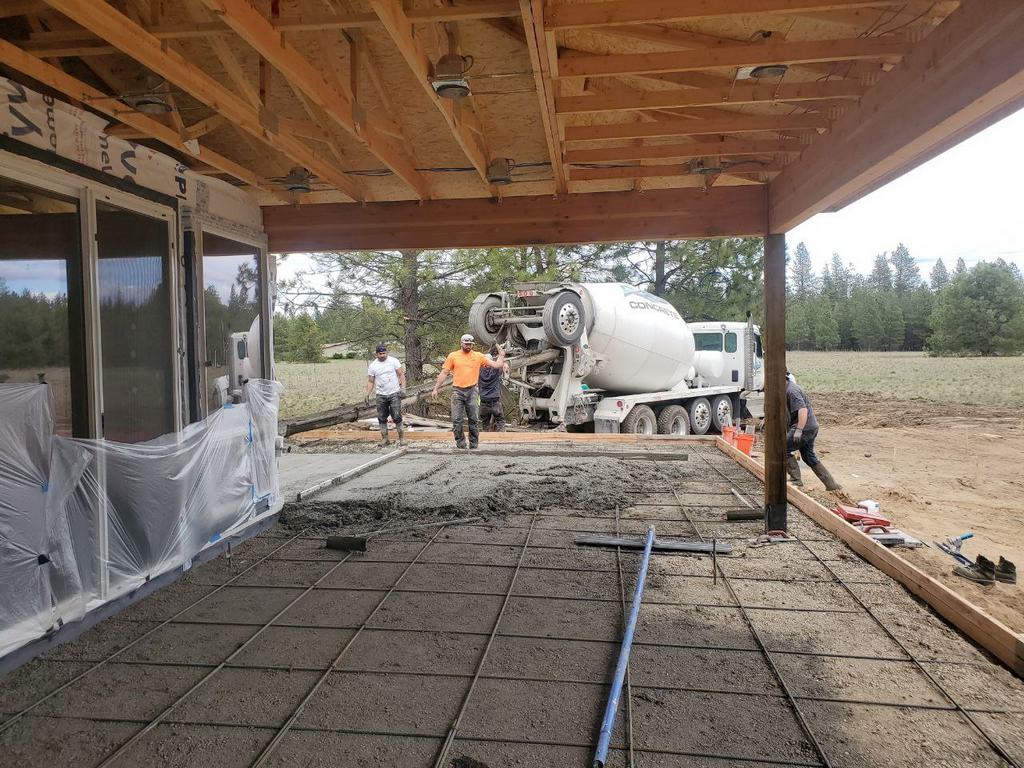It may come as a surprise to some people, but concrete can be poured in rainy weather. Moreover, rain does not affect the quality of the concrete curing reaction itself. In addition, contractors use water spray while the concrete is curing to make the coating uniform.
Light rain really doesn’t interfere with the pouring of concrete. However, if there is a heavy downpour outside, and the work cannot be moved, it is necessary to cover the area where the concrete is poured with a tarp.
This is necessary so that the surface where the concrete is poured should be as dry as possible. Instead of a tarp, you can also use plastic sheets or polyethylene. If suddenly rainwater accumulates at the place where the concrete has been poured, drainage must be provided to get rid of this moisture.
Water is one of the important components in concrete, and its amount in the mixture is strictly measured. But you should remember that if light rain does not affect the quality of concrete, then heavy rain can consume the strength of the material.
How to pour concrete in rainy weather
As we said earlier, in heavy rain, you need to cover the place of pouring concrete with a tarp or other materials. It is worth noting that after pouring the concrete, you must also cover the concrete with a tarp.
When can you walk on a new concrete surface?
You can walk on concrete as early as 48 hours after pouring. But remember, you will be able to drive on concrete by car only 15 days after pouring.
 Light rain won't interfere with pouring concrete
Light rain won't interfere with pouring concrete
How to pour concrete in a quality manner?
If you want to pour the concrete with high quality, then it is best to contact professional concrete contractors. You should not do this on your own, especially if you have no experience in the construction industry.
A professional concrete worker will be able to pour concrete correctly in any weather. The contractor is well qualified to prepare the place properly for pouring concrete, protect it from excess of moisture and comply with all technical requirements.



 509-201-4190
509-201-4190
